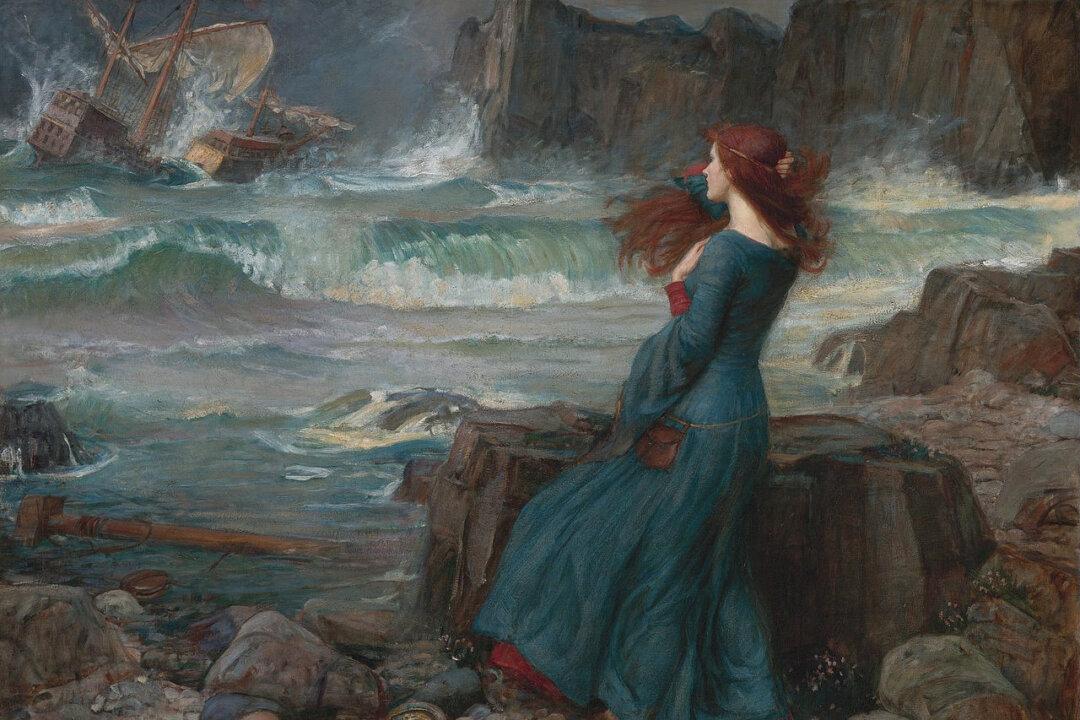The fact that we don’t know who wrote “Sir Patrick Spens” only adds to the impression that it’s a mysterious and dramatic fragment of a lost world, a vision conjured up from the shadows of the past and borne to us on the winds of a stormy sea.

A Ballad
The poem is a ballad, a poetic form traditionally used to tell tales. Each stanza consists of four lines. The first and third have four beats (tetrameter), while the second and fourth have three beats (trimeter). The second and third lines of each stanza rhyme. This galloping rhythm has a forward-driving momentum that’s perfect for storytelling. “Sir Patrick Spens” makes especially effective use of the form by moving swiftly from image to image, progressing at breakneck speed toward the disastrous conclusion.Like all poetry, “Sir Patrick Spens” should be read aloud. It lends itself to a very dramatic reading, full of pathos. The smooth and repetitive vowel sounds are music to the ear. Trying to pronounce the Scottish dialect through the poem’s inventive spelling is actually quite fun.
The king sits in Dunfermline town, Drinking the blude-red wine; “O whare will I get a skeely skipper To sail this new ship o’ mine?”
O up and spak and eldern knight, Sat at the king’s right knee; “Sir Patrick Spens is the best sailor That ever sail’d the sea.”
The opening offers some thought-provoking details. First, as English professor William Harmon pointed out in his book “The Classic Hundred Poems,” the blood color of the wine foreshadows the poem’s tragic end. A sense of foreboding settles over the poem from the start. The fact that the king comes to this decision (of a seafaring expedition during the dangerous, stormy time of year) while drinking wine makes readers wonder whether he’s entirely sober. There’s even a suggestion that his decision is a drunken and arbitrary one based on the desire to try out a new ship, just like a rich teenager wanting to test-drive a new car for no other reason than amusement.However, when Sir Patrick receives the king’s letter, it’s clear that the mission is to collect a Norwegian princess. There may be a political necessity to the expedition, such as finalizing an arranged marriage.
The first word that Sir Patrick read So loud, loud laugh’d he; The neist word that Sir Patrick read The tear blinded his e’e.
In this poignant stanza, Sir Patrick laughs at the madness of a journey to Norway under these conditions. But then he reads further, and realizes that he’s the one chosen for the mission, and the laughter turns to tears. It’s a death sentence.Interestingly, Sir Patrick never considers disobeying the order. His commitment to the king is total. To understand this, it’s helpful to remember that the medieval conception of hierarchy differed greatly from the modern perspective. People at that time generally saw their superiors’ commands as representing God’s will. They believed and that God could work good even through the mistakes of his human representatives. Moreover, the relationship between lord and vassal was a sacred relationship, analogous to the relationship between Christ and his followers, that buttressed the entire structure of society.
Perhaps for these reasons, then, Sir Patrick simply resigned himself to the mission, saying, “Be it winde, be it weet, be it hail, be it sleet/ Our ship must sail the faem.”
They hadna sail’d a league, a league, A league but barely three, When the lift grew dark, and the wind blew loud, And gurly grew the sea.
Homeward Bound
The sailors try to use silk and twine to stop the water from bursting in through holes in the hull, but it’s no use. The poet tells us that the Scot lords were loath to get their shoes wet, but before it was all over, their hats were wet, too. Many feather beds floated on the surface of the sea amid the wreckage.
None of the lords’ lovely possessions could save them from the “faem” (foam) of the sea, and the poet heightens the emotional tenor by painting a picture of the ladies waiting at home for their loves’ return: “O lang [long], lang may the maidens sit/ Wi their gowd kames [gold combs] in their hair/ A-waiting for their ain dear loves!”
Should Sir Patrick have disobeyed the king to avoid this tragedy? Is that the implication of the poet? Carol Rumens believes so, arguing that the poem has a modern edge, and its moral is “kings, or politicians, should trust the experts: loyal servants at any level in the chain of command should dare to disobey unreasonable requests.”

I’m not convinced that the poet sees the events of the poem this way. I’m not convinced the poet has any particular moral in mind, actually, and it may be that we’re imposing modern sensibilities onto the poem when we derive such a neat, individualistic, moral message from it. Rather, I see a poet who writes with compassion about the way things are: People in positions of authority always commit follies that others end up having to pay for. That story repeats regardless of the historical period or political system. There’s no hint of revolutionary fervor that I can detect. Instead, the poet meditates on fate, and folly, and the emptiness of finery, but also on nobility and loyalty. There is a naïve nobility in respecting the authority of an office even when the one holding the office falls short.
How should we respond to foolish commands? Does that response differ from the way we ought to respond to evil commands? These are complex questions, and the poet doesn’t address them. Instead, he portrays a character whose response to such a situation is unquestioning loyalty and self-sacrifice—to the point, perhaps, of blindness and foolishness.
Half-owre, half-owre to Aberdour, ‘Tis fifty fathoms deep; And there lies gude Sir Patrick Spens, Wi’ the Scots lords at his feet!
What arts and culture topics would you like us to cover? Please email ideas or feedback to [email protected]







